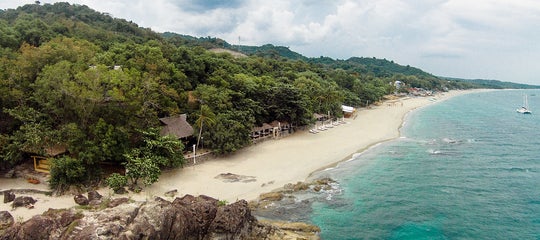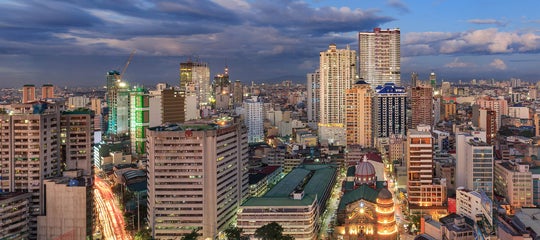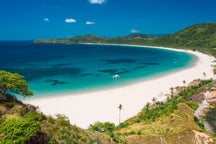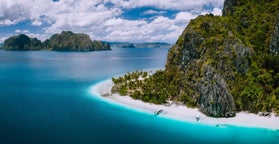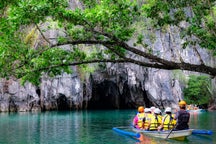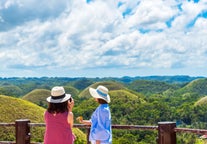A vacation in the Philippines usually includes a visit to the country's stunning white sand beaches and islands. However, this island nation has a lot more to offer when it comes to natural attractions. Because the Philippines lies in the Pacific Ring of Fire, it is naturally home to some of the most magnificent mountains and volcanoes in Southeast Asia and the world that are best explored via hiking tours. There are around 300 volcanoes in the Philippines, and 24 of these are active.
This article highlights the most popular and amazing Philippine volcanoes worth seeing. Some of them are dormant, while others are active. Many Philippines travel packages offer mountaineering or mountain hiking experiences to the most famous peaks in the country.
However, take note that there are some volcanoes on the list that cannot be explored by trekking to the crater. Travelers can still visit the vicinity of these wonderful attractions and admire their incredible views from vistas. Some sites also offer exciting activities near or at the foot of the volcanoes.
Here are the must-see and best volcanoes in the Philippines that you should add to your travel itinerary, categorized by the three major regions they belong to:
Volcanoes in Luzon
Most of the Philippines' active volcanoes are found on the island of Luzon, which is the largest and most prominent island in the Philippines. Some of the iconic volcanoes found here include Albay's Mayon Volcano, Central Luzon's Mt. Pinatubo, the popular Tagaytay view of Taal Volcano, and Sorsogon's Bulusan Volcano and Lake.
- Read our article on the best tourist spots in Luzon
Mayon Volcano (Albay)
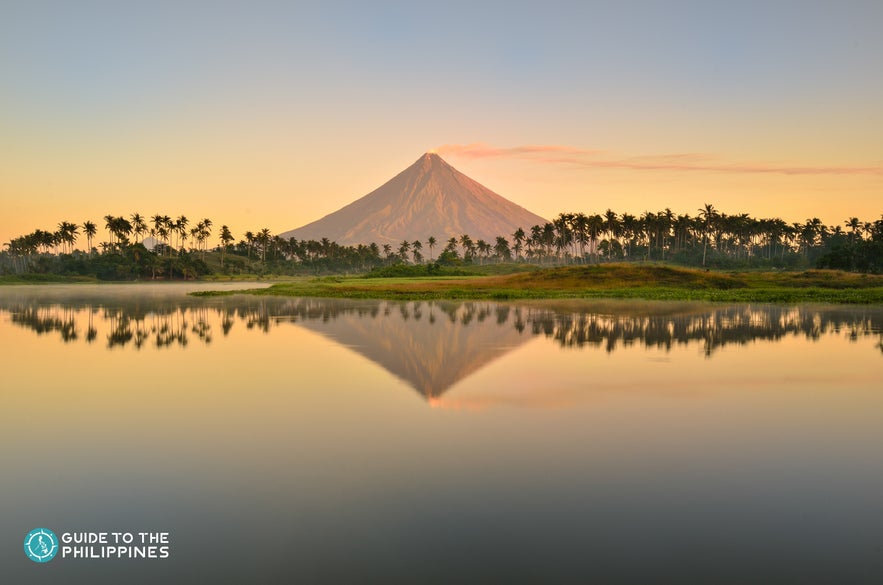
At around 2462-meter-high, Mayon Volcano is one of the most famous volcanoes in the Philippines. Also called Mount Mayon, this volcano is situated in Albay, a province in the Bicol region, which lies in the southeastern section of the country.
One of the most interesting facts about the Mayon Volcano is it has erupted 50 times in the past decades, making it one of the most active volcanoes in the country. Today, Mayon is more admired than feared. It has drawn visitors because of its perfect cone shape, which is unmatched anywhere else in the world.
Booking a Mayon Volcano tour package is a common activity among travelers exploring the best Bicol tourist spots. A more adventurous Mayon Volcano tour includes a Mayon ATV ride and hike. A thrilling Mayon ATV ride or Mayon ATV tour will bring you through rivers, dirt paths, and gullies to reach the foot of the volcano. From there, you will need to hike to a lava wall and climb to the top of the barricade to get amazing vistas of Mayon.
The Mayon volcano ATV tour price depends on the trail and duration. Some of the places near Mayon Volcano that you may want to visit include Cagsawa Ruins, Lignon Hill Nature Park, and Daraga Church.
Mt. Pinatubo (Zambales)
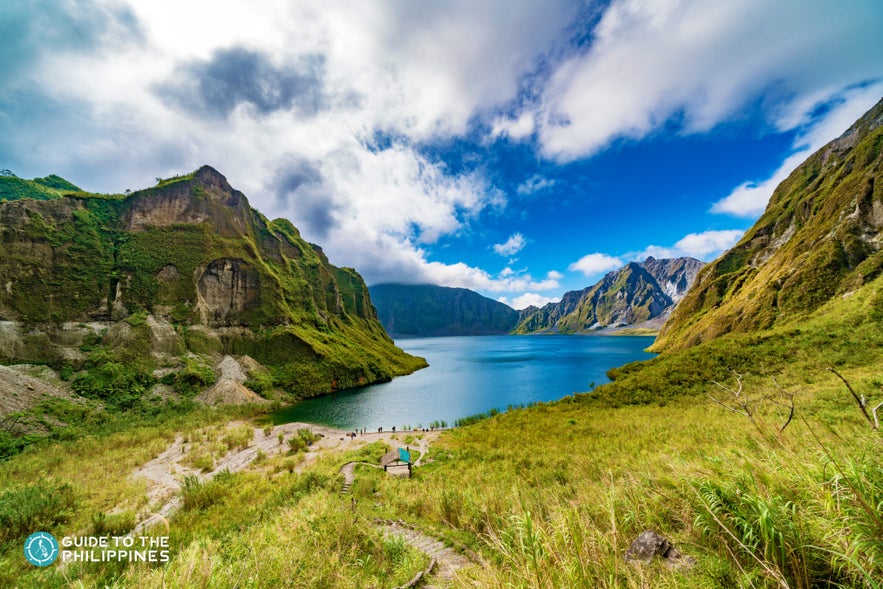
Mt. Pinatubo is included in the list of active volcanoes in the Philippines. It rises at about 4,800 feet (1,460 meters ) high and is located within the boundaries of Central Luzon provinces - Zambales, Tarlac, Pampanga. The towns of Botolan in Zambales and Capas in Tarlac are the most popular gateways to Pinatubo.
- Read our article on the best Zambales resorts
Mt. Pinatubo’s eruption in June 1991 is one of the devastating volcanic eruptions recorded in Asia and the world. Although Pinatubo remains active until the day, you can safely visit it by availing yourself of an Mt. Pinatubo day tour package.
These days, Mt. Pinatubo is now one of the best mountains to hike in the Philippines. Most of the available tours offer a guided Mt. Pinatubo hike that starts at a trail near Botolan Zambales and ends at the crater where the Pinatubo Lake awaits. Some Pinatubo tours start at Capas, Tarlac. Make sure to check where the tour starts from before booking your Mt. Pinatubo adventure.
The beautiful aquamarine-colored lake in the crater of Mt. Pinatubo is one of the reasons why it’s one of the Philippine volcanoes worth seeing. It's an adventure-filled day of hiking and off-road driving so for a hassle-free trip, book Mt Pinatubo tours from Manila that already include transfers.
Taal Volcano (Batangas)

Taal Volcano is a complex volcano system, with the main volcano standing at around 1,020 feet. Volcano Island is the most identified feature of Taal, but it's only part of the volcano system, which has 47 craters and 4 maars. Maars are volcanic craters formed by an eruption that forced groundwater to interact with magma.
- Book Tagaytay hotels with a stunning view of Taal Volcano
Taal Volcano used to be the most trekked volcano in the Philippines due to its relatively easy trail and proximity to the capital, Manila. However, trekking activities are no longer allowed due to the eruptions in 2020, so it's best to book a Taal Lake boat tour which will take you near the volcano at a safe distance.
You can also explore booking a Tagaytay tour, a Taal Batangas tour, or book a stay in one of the best Tagaytay hotels instead to get the best views of Taal. Today, Taal is considered to be the most active volcano in the Philippines. However, you can still safely view Taal, and it is still worth admiring, even from a distance.
- Check out our article on the best Tagaytay hotels with a view of Taal Volcano
Taal is located in Batangas province, which is in the Calabarzon region of Luzon, and is known for Batangas tourist spots like beaches lined with Batangas resorts and mountains for beginner to advanced hikers. Towns like Talisay and San Nicolas surround the shore of Lake Taal. You can visit one of these towns or head to Tagaytay, where several restaurants and cafes offer perfect views of this mighty volcano.
Mt. Arayat (Pampanga)
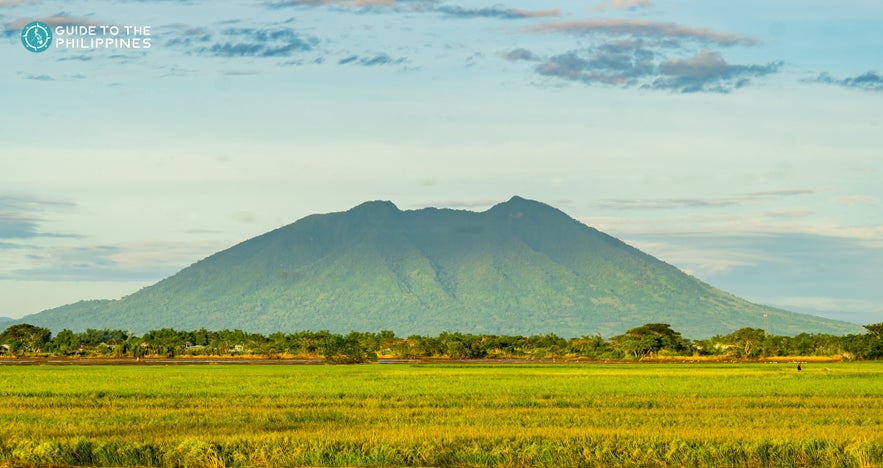
With a height of about 3,366 feet (1,026 meters), Mount Arayat towers over the province of Pampanga, Central Luzon region, known as the Culinary Capital of the Philippines. With no recorded eruptions in the past centuries, Arayat is one of the dormant volcanoes in the Philippines.
- Read our article on the best Pampanga resorts and hotels
This volcano has mystical origins. Local folklore mentions that Arayat is home to diwatas (fairies). The most popular activity to do here is a Mt Arayat day hike tour. Hikers can choose between two existing trails that lead to the peaks of the volcano. Mount Arayat National Park in San Juan Baño town is the access point to the southern peak trail.
- Book Angeles Pampanga hotels for your vacation
This trail features views of Central Luzon and the Pampanga River. This national park is also equipped with natural pools and picnic grounds. The Pampanga State Agricultural University in Magalang is the access point to the northern peak trail of Arayat.
Mt. Makiling (Laguna & Batangas)
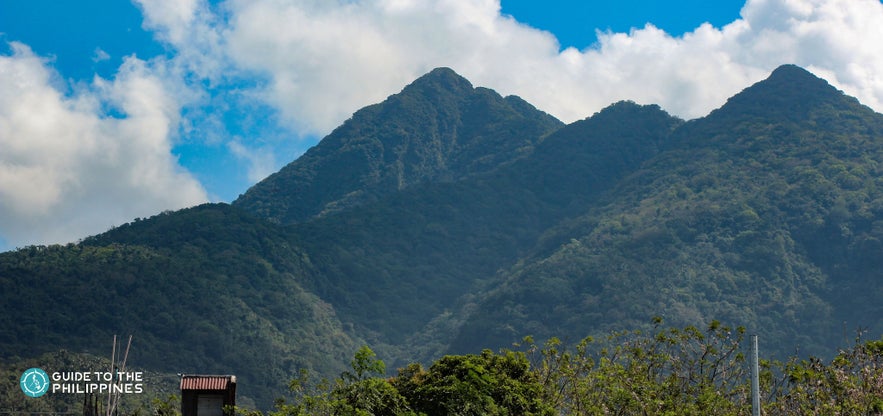
Mount Makiling is a dormant volcano situated within the territories of Laguna and Batangas provinces, Calabarzon region. Makiling has an elevation of 3,580 feet (1,090 meters) and belongs to the Laguna Volcanic Field.
Mount Makiling is safe to visit as it has no recorded historical eruption. However, it does have hot springs and mud springs, which are signs of geothermal activities.
- Browse our list of the best Laguna hot spring resorts
Locals regard Makiling as a sacred mountain that is home to a deity named Maria Makiling. It is a designed ASEAN Heritage Park and has the official title of Mount Makiling Forest Reserve. The town of Los Baños, Laguna is the most popular gateway to this volcano. Makiling has become a prime ecotourism destination in Luzon. Most visitors go for a Mt. Makiling hike or explore nearby sites like the Flatrocks, the mud springs, the rainforest park, and the Makiling Botanic Gardens.
Volcanoes in the Visayas
The Visayas, which is the central region of the Philippines, is home to many active and inactive volcanoes. Most of the prominent volcanoes in this region are found on the islands of Negros and Leyte.
- Check out our article on the best tourist spots in Visayas
- Find the best hotels in Bacolod for your trip.
Mt. Kanlaon (Negros)
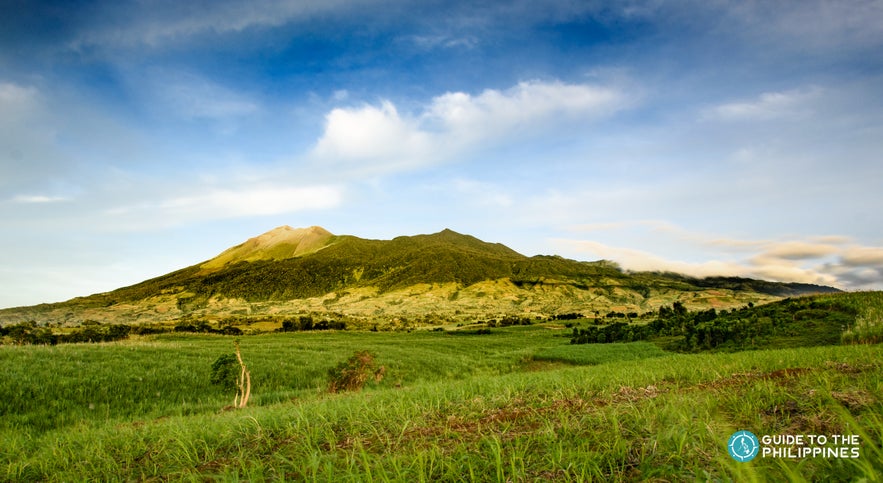
Mt. Kanlaon (also spelled Canlaon) or Kanlaon Volcano rises to 8,087 feet (2,465 meters) above sea level and is the highest mountain on Negros Island and within the Visayas region. Negros is the fourth largest island in the country and is home to Negros Oriental and Negros Occidental Provinces.
Kanlaon is an example of a shield volcano in the Philippines. A shield volcano means that the entire natural structure resembles a shield when viewed from above the ground. This type of volcano produces thin lava and can form mountains.
Mount Kanlaon is at the heart of Mount Kanlaon Natural Park, an established national park since 1934. Despite being an active volcano, Kanlaon still receives many tourists, who usually enjoy hiking the various trails that lead to the Kanlaon basecamp.
Mapot and Manawin trails in Canlaon City are the gateways in Negros Oriental. The Guintubdan trail in La Carlota City and Wasay trail in Murcia are the access points to Kanlaon in Negros Occidental. The hot springs - Mambukal, Bulacan, and Bungol, at the foot of the volcano, have also become popular stops for tourists heading to Kanlaon.
Mount Talinis (Negros Oriental)
With an elevation of 6,243 feet (1,903 meters) above sea level, Mount Talinis is the second-highest mountain on Negros Island. This volcano belongs to the mountain range called Cuernos de Negros in Negros Oriental. The whole Cuernos de Negros volcano system is categorized as active. However, hiking Mount Talinis is still considered an exciting and safe tourist activity.
To reach the peak of Mt. Talinis, you can follow one of the nature trails that start from the towns of Apolong (Valencia), Bidjao, and Dauin. During your hike, you can also stop over the crater lakes like Lake Yagumyum, Lake Mabilog, and Lake Nailig. Lake Nailig is regarded as an excellent camping ground, as the Talinis Peak is only about a 30-minute trek from here. Mt. Talinisis is close to the beautiful Balinsasayao Twin Lakes Natural Park, a famous natural attraction that features the Balinsasayao and Danao lakes.
Volcanoes in Mindanao
Mindanao is the southernmost region in the Philippines and is home to more than 20 volcanoes, one of which is the highest peak in the whole country.
- Read our article on the best Mindanao tourist spots
- See our list of top Samal Island resorts
Mt. Apo (Davao)
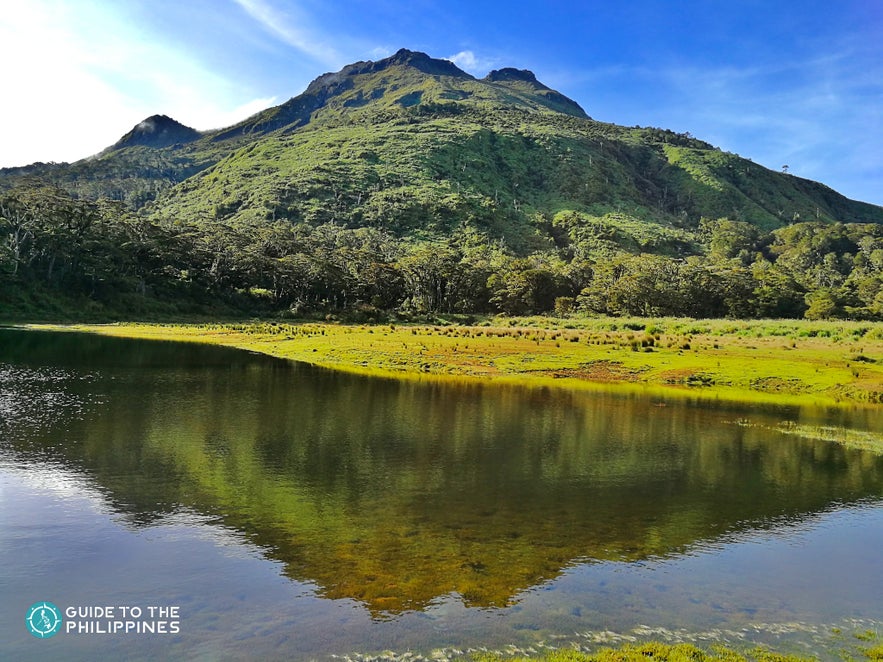
With an elevation of 9,639 feet (2938 m), Mt. Apo is the tallest volcano in the Philippines. This stratovolcano is tucked within the 64,000-hectare Mount Apo National Park, which is an ASEAN Heritage SiteTrek. This national park is located in Davao Province, Central Mindanao. Though Mt. Apo has no known eruption, it is considered an active volcano.
Mt. Apo features a flat summit, three peaks, and a densely forested landscape. The highest peak is called Davao Volcano, which has a small lake within its 500-meter wide crater. Hiking Mt. Apo is the number one tourist activity here. Check out our Sta. Cruz trail 3-day hike to Mt. Apo and 2-day Mt. Apo hiking package.
Mt. Matutum (South Cotabato)
Photo by @lagaw.juan on Instagram
Mt. Matutum is an active stratovolcano with an elevation of 7500-feet (2286 meters) above sea level. Located in South Cotabato, Southern Mindanao, Matutum is about 5.7 kilometers from the town of Tupi and 30 kilometers from General Santos City. Matutum’s surroundings and foothills are the original home of the Blaan indigenous group.
Matutum is a center of biodiversity and houses endangered species like the tarsier and Philippine eagle. This ecotourism destination features hiking trails, dense forests, gorges, and two hot springs (Acmonan and Linan). Hiking to the summit of Mt. Matutum is common among adventure-seeking tourists. Reaching the summit is quite a treat as it features a beautiful and well-preserved crater with a diameter of 320 meters or 1,050 feet.
Mount Hibok-Hibok (Camiguin)
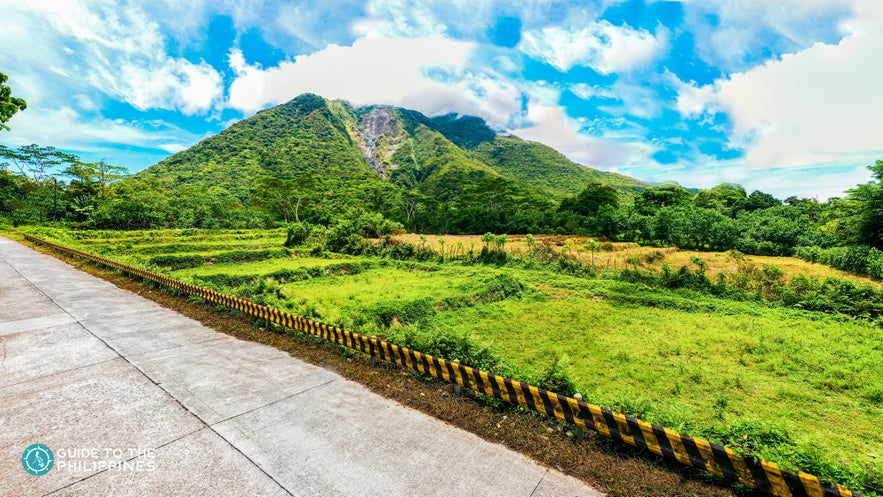
Hibok-Hibok Volcano (also referred to as Catarman Volcano) is an active volcano on Camiguin Island. It rises about 4370 feet or 1332 meters above sea level.
The Camiguin Island province lies in the Bohol Sea and is situated around 10 kilometers off the northern coast of Mindanao Island. It is home to seven volcanoes, with Hibok-Hibok being one of the youngest among these peaks.
Mount Hibok-Hibok is the second half of Mt. Timpoong-Hibok-Hibok Natural Monument, which also features Mt. Timpoong. This site is one of the 8 ASEAN Heritage Parks in the country.
Aside from trekking to the top of Hibok-Hibok, consider getting a Camiguin tour package that can also include visits to hot and cold springs near Hibok-Hibok. The most famous hot spring site is Ardent Hot Springs, which features several pools filled with spring water heated by Hibok-Hibok Volcano. You can also compliment your Mt. Hibok-Hibok visit, with the popular Camiguin white island tour package.
Discover the Must-See Volcanoes in the Philippines
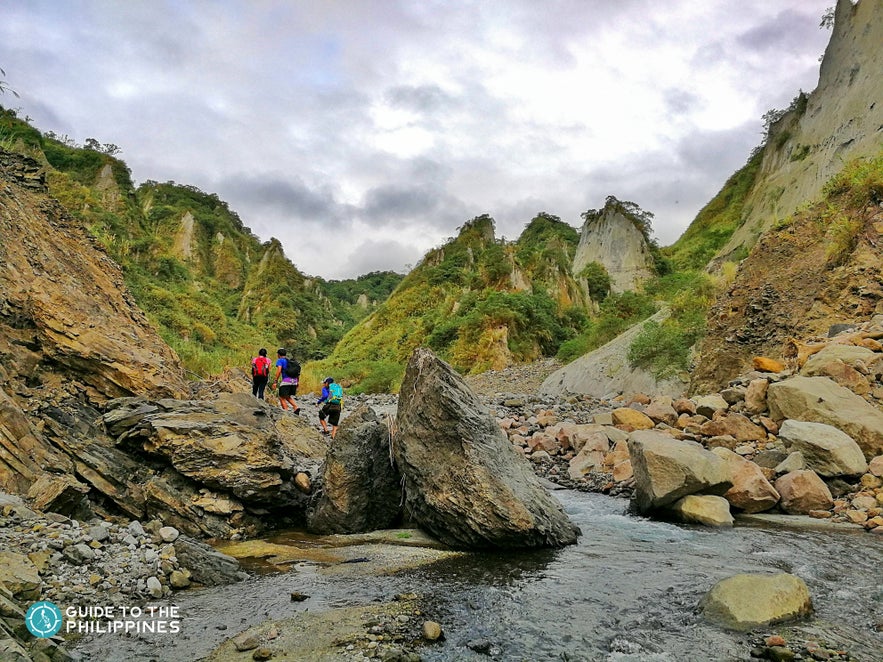
Exploring the Philippines’ magnificent volcanoes is a worthwhile and exciting travel experience. These volcanoes have become ideal ecotourism sites that offer adventurous outdoor activities. Before trekking your desired Philippine volcano, make sure to check with local authorities and always make safety your number one priority.
Frequently Asked Questions About Volcanoes in the Philippines
1. How many volcanoes are there in the Philippines?
There are approximately 300 volcanoes all across the Philippine archipelago.
2. Why does the Philippines have many volcanoes?
The Philippines sits at the boundary of two major tectonic plates. These plates, the Eurasian Plate and the Philippine Sea Plate, are tucked underneath the archipelago within the deep trenches that run along the western and eastern sections of the country. The shifting of these plates has created a lot of earthquake activity and volcanic development throughout history.
3. What are the active volcanoes in the Philippines?
According to the Philippine Institute of Volcanology and Seismology, there are 24 active volcanoes in the country. Based on their recent activity, Mayon, Pinatubo, Taal, Hibok-Hibok, Bulusan, and Kanlaon are the six most active volcanoes.
4. What are the inactive volcanoes in the Philippines?
There are dozens of inactive or sleeping volcanoes in the Philippines. Some of them have no eruptions recorded in modern history. Prime examples inactive volcanoes in the country include Mt. Makiling (Laguna) Mt. Iraya (Batanes), Mt. Alu (Sulu), and Mt. Abuyog (Leyte). Mount Butay in Camiguin is an example of an extinct volcano in the Philippines.



